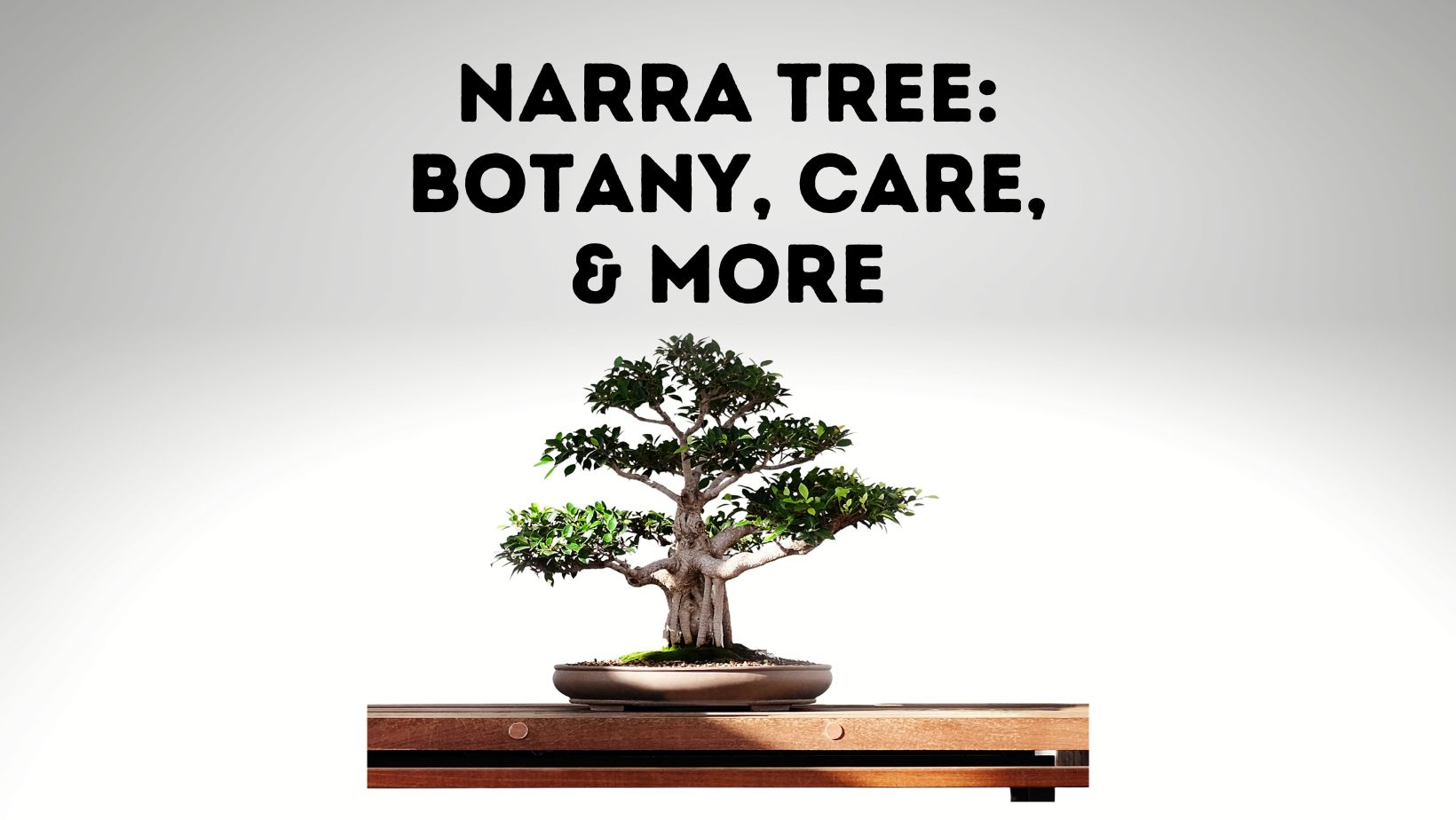
The history of the freedom struggle of the Philippines is glorious. And in that case, a special tree symbol is used to remember the story of the heroic struggle of the freedom fighters of the Philippines. This tree is the Narra tree.
More robust than other trees and upright in shape, just as the uncompromising freedom fighters stood straightforwardly good.
Therefore, this hardy tree is used as a unique national symbol of the hardworking Philippines to highlight the heroes’ good attitude and fearless character in the struggle for hard-earned independence. Today we will know in detail about this narra tree in this post.
What is the Narra tree?

Maybe you have seen this plant before but needed to recognize it- Narra, the Philippines’ national tree. Many Narra trees can be found throughout Metro Manila and the surrounding provinces of the Philippines.
They usually bloom during the hot, dry summer, creating a magnificent sight of a tree. They are nearly full of fragrant yellow minute flowers that have fallen to the ground here and there at the day’s end.
This is known as the Narra Tree. Historically, it was nationality accepted in 1934 by then Governor-General Frank Murphy via Proclamation No. 652 as such a national tree, and it has gained worldwide recognition. Let’s get to know more details.
Narra tree meaning & scientific name
Genus: Pterocarpus
Scientific name: Pterocarpus indicus
Narra plant is also called Andaman redwood, Burmese rosewood, asana, mukwa, padauk, etc. It belongs to the pea family’s genus of timber trees (i.e., Fabaceae). It is primarily found in Asia and Africa.
The Fabaceae family is one of the largest flowering plants, with 766 genera and 19,500 species growing in various climates and habitats.
Its genus, Pterocarpus, is named after the Greek words pteron, which means “wing,” and karpos, which means “fruit,” and it contains 60 species found throughout the tropical regions.
The narra is widely distributed and has a high morphological and ecological diversity across its range.
Some intraspecific variations include the size and shape of leaflets, flowers, and fruits.
as short prickles. However, some scientists propose that the forms are the same by species.

Narra tree lifespan
Narra trees typically reach maturity at the age of 4 or 5 years. This is a perennial tree that can live for a long time. So far, the oldest recorded Narra Tree is 60 years old.
Narra tree characteristics
The Narra tree is deciduous, indicating that its foliage falls yearly. Narra is a lovely tree with sagging branches that sway in the breeze.
Short-lived flowers bloom in April-May, and the tree becomes a shimmering mass of fragrant yellow blooms for 1-2day before falling off nearly at once. The unusual winged fruit remains on the tree for months.
Narra tree flowers
From February to May, it bears many aromatic golden-yellow flowers that easily fall to the ground after being pollinated by bees. Though the flowers are fleeting, they are noticeable as the entire narra tree canopy fills with fragrant tiny golden yellow flowers.
After the petals have fallen, flat disc-shaped seed pods form on the end of the branches, and the seeds are scattered and dispersed in the neighbourhood within a few months.
Narra tree fruit
The Narra Tree produces small fruits covered by membranous wings or pods measuring 2 to 3 inches in diameter. The Pod is disc-shaped and hairy when young, eventually becoming smooth.
The fruit has one or two monocotyledonous seeds in the center and does not split open when mature. It was discovered that it ripens in four to six years and turns purple when dried. The center of the Pod may be bristly or have tiny spines.
Narra tree benefits
Given are the precious benefits of the Narra tree.
Immune boosting/anti-asthma:
Root, bark, and wood are used to make a pharmaceutical formula with immune-boosting properties allegedly used to prevent and treat asthma.
This anti-cancer and polyphenolic antiplasmin:
This constituent from the bark has a carcinostatic effect on ascitic mice with Ehrlich tumors.
Antibacterial:
Narra leaves, roots, and stem bark samples exhibit a wide range of antibacterial activity with butanol and methanol.
Anti-termite:
According to research, wood extractives can be used as a preservative treatment for wood to preclude subterranean termite function.
Social value:
It is thought to be an effective form of traditional Asian medicine. Malaysians use narra to treat mouth ulcers, bladder infections, ailments, diarrhea, dropsy, brain pain, and syphilis. Boils, bristly heat, and ulcers are all symptoms of Javanese cover.
Filipinos collect narra to make herb teas and pills to cure various diseases and ailments, including leprosy, period pain, flu, rheumatoid, and diabetes. In Papua New Guinea, the narra is used to treat tuberculosis, headaches, and sores and as a purgative; in the Solomon Islands, people treat dysentery, menorrhagia, and gonorrhea.
Productive uses and management:
The Narra is a commercial genus with various applications, notably as a decorative or shade tree. Because of its nitrogen-rich leaf fall, it is also grown to create a border or windbreak across food croplands and living fences around the pastures.
Environmental value:
Its flowers provide nectar and pollen to bees. The narra can also help stabilize the soil where it grows.
Economic value:
The narra is regarded as a superb timber in south Asia and one of the best timbers in the Philippines. Its wood is used in various products, including cabinetry, cart rims, carving, building, Furniture, and percussion instruments.
How long does the Narra tree grow

The tree proliferates, typically 6-7 feet per year. When mature, the narra grows to an average height of 80-120 feet, with a trunk up to 6-7 feet in diameter. Its foliage is 5-9inch long, pinnate, with 5-11 leaflets, and has a circumference of 40-120ft.
How many years does it take to harvest a Narra tree?
This tree is grown for its incredible wood. The Narra tree prefers open areas for harvesting. It extends from sea level to 1300 metres above sea level. This plant thrives in areas with an average annual rainfall of 100-400cm and temperatures ranging from 20-30°C. It is resistant to extended dry seasons, salt, and termites.
It shows pre-maturity when it attains the fruit-bearing stage. The time it takes for the plant to bear fruit is determined by its health, original cutting, and climate. Plants grown from large branch cuttings of mature trees typically flower and fruit in 2-3 years. Trees formed from seedlings may take more than 5-7 years to produce usable amounts of seed.
The Narra Tree has a medium-sized trunk that measures 6-7ft in diameter. The bark on the box is harsh and mottled. The trunk has a larger diameter at the base or tapers upward.
The fibrous rootsof the Narra Tree spread over a wide area. It prevents soil erosion because the fibrous roots cover a large extent. So harvesting Narra trees in or near flood-prone places is naturally protective for humanity.
Narra tree wood
The Narra tree wood is well-known. The wood is of exceptional quality and is used to create high-end Furniture like that of Sagwan Tree Wood. The wood is usually rose-red and variegated with yellow, making for beautiful Furniture. The wood of the Narra Tree is dense, and the color patterns distinguish it from other woods.
Narra wood is termite and rot-resistant, as well as rose scented. This wood is used to manufacture musical instruments, wood carvings, and cartwheels. Carpenters prefer it because it is simple to work with. This wood also makes home furnishings such as beds, tables, chairs, flooring, and many other items. Furthermore, it is a very durable wood. Narra wood can be used to make Furniture for many years.
Narra wood uses:
- Narra wood for Furniture
- Narra wood for plywood
- Narra wood for veneer
- Narra wood for Boatbuilding
- Narra wood for turned objects
How to plant a Narra tree?
Remove any weeds and debris from the area where you want to plant the narra seedling. Make sure a 2-meter radius is kept clear of other vegetation. Make a plant hole that is at least 7x7x7 inches in size. Plant the seedling at the correct depth.
With the seedling oriented upward, the root collar should be level with or slightly below the ground surface. Fill the opening with upper or garden soil and firmly press the earth around the seedling’s base. In plantation-making, seedlings should be planted two meters apart if planted in a row three meters apart from one strip to the next.
How to take narra seedling care?
Remove grass or other undesirable grasses for two to three years, and once every three months, cultivate the soil surrounding the seedling’s base (40-inch diameter). Cover the bottom of the seedling with mulch. Keep the mulch foundation at 10 inches in diameter and use grass, leaves, or other appropriate materials.
Preferably during the dry season, prune the branches within about 50% of the crown depth, being careful not to damage the bark.
Remove diseased or infected vegetation from the vicinity to prevent plant diseases from contaminating your seedlings and spreading. Regularly inspect the seedling’s development for signs of pests and illnesses.
Narra tree planting rules:
- Water daily in the summertime. In winter, water should be given sparingly, and care should be taken, so the roots do not dry out.
- Proper fencing or monitoring should be done to protect these plants from goats and cattle.
How much is the Narra tree in the Philippines?
Unfortunately, research by the University of the Philippines Los Banos has shown that only a tiny number of Narra trees survive globally.
Is Narra tree strong?
Yes, firm and hard usually. Narra is typically fairly durable in decay resistance and has strong weathering qualities. Termite or powder post-beetle threat resistance are both generally present. The features of Narra wood are meshwork, a medium to coarser texture, and a lovely healthy sheen.
Narra tree furniture: pros & cons
Narra wood has the following pros.
Appearance:
Narra wood has a lovely appearance and a distinctive pattern.
Simple to work:
Both hand tools and machines may be used with ease to work on Narra wood.
Pricing:
The ability to select the area they desire based on quality is advantageous to purchasers.
Durable:
Narra wood has a high resistance to deterioration.
The Narra tree disadvantages are:
Vulnerability:
The IUCN Red List categorizes Narra wood as vulnerable. This is because there has been a 20% population decline over the last three generations. It aims to halt the factor that has led to population decline due to exploitation and neglect.
Herbivorous interrupt:
Goats, sheep, and cows eat this plant at a young age, which is a nasty factor in increasing the number of these plants.
Dominant grow-up:
Narra tree grows dominantly in their surroundings with no will balance for other trees.
Conclusion
Narra is a large deciduous reddish hardwood tree native to most Asian countries. Widely introduced due to its many uses, the narra was declared the national tree of the Philippines in 1934 by Governor-General Frank Murphy of the Insular Government of the Philippine Islands.
Like Narra’s golden flowers, philippine democracy and freedom should be more fragile and needs to be defended with constant vigilance. Philipines are fortunate that, like Narra’s timber, the Filipino spirit is strong and resilient.
And last but not least, the use and trade of Narra wood must be immediately limited so that the Narra population will increase because population declines can make it endangered and even extinct.
